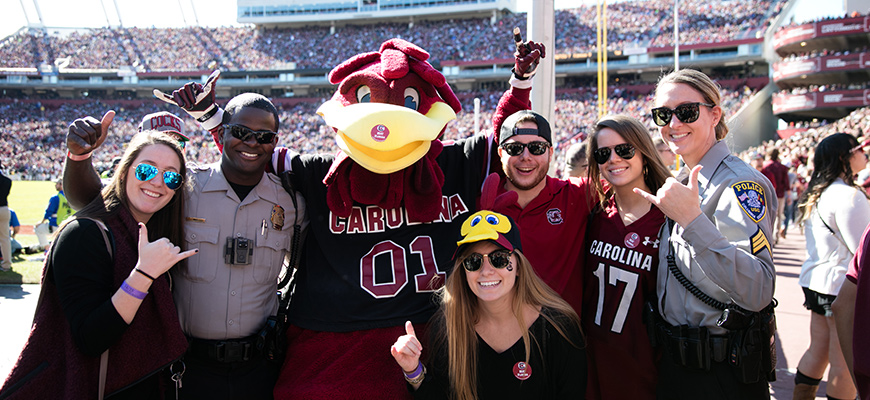
How USC is working to keep the campus safe
Posted on: May 7, 2018; Updated on: May 7, 2018
By Harris Pastides
The safety and security of the University of South Carolina’s students and campus community is paramount. A recent story within these pages highlighted that USC was the safest campus in South Carolina and the sixth safest among 6,284 nationwide. This ranking, from an affiliate of the ADT security company, is a testament to the innovative and strategic work of our public-safety professionals.
However, preparedness is a job that’s never finished. Recent school shooting tragedies serve as a stark reminder of the challenges we all face. In fact, school shootings have been a tragic part of America’s story for more than 250 years — from the Enoch Brown school massacre in 1764 to this generation’s string of unthinkable events.
USC was the safest campus in South Carolina and the sixth safest among 6,284 nationwide. This ranking, from an affiliate of the ADT security company, is a testament to the innovative and strategic work of our public-safety professionals.
Higher education is no stranger to this violence.
The tragedy at Virginia Tech, which occurred 11 years ago this spring, challenged college leaders to rethink campus security, leading to the overhaul of campus safety regulations and protocols — from installing safety locks to ensuring mental health services to establishing multi-modal emergency notification systems.
And the relentless work to address challenges and vulnerabilities within our campus communities never ceases.
At USC, our public-safety professionals work tirelessly to seek best practices and policies to diffuse threats, anticipate others and enhance preparedness at an institutional level. From trainings for students, administrators, faculty and staff to establishing command systems and emergency response units to strengthening how our campus community communicates in an emergency — through text, email, apps, social media and campus infrastructure, such as sirens — our public-safety professionals are taking the necessary steps to meet the magnitude of this moment.
To this end, we’re working toward the mandatory training for our nearly 10,000 administrators, faculty and staff, which is in addition to the thousands of similar trainings already conducted. We’re also continuing to evaluate building-security plans down to the individual room level to provide our community with even more information in the event of an emergency situation.
Across our campuses and cities and throughout our state, public-safety professionals are doing incredible work day-in and day-out to ensure the safety of the communities they serve.
Ultimately, however, keeping our community safe is not just a public-safety responsibility, but a community responsibility. Our faculty, staff and students support public safety by reporting suspicious activity and adhering to the “See Something, Say Something” campaign launched across USC’s campus and across the country. Concerned community members are also encouraged to report suspicious behavior by calling public safety directly or using the RAVE Guardian Safety App that is provided free to the university community and provides a mechanism for anonymous reporting.
Across our campuses and cities and throughout our state, public-safety professionals are doing incredible work day-in and day-out to ensure the safety of the communities they serve. We cannot always prevent violent crimes from occurring, but we can mitigate the risks. It’s an enormous undertaking in a job that’s never finished and is often not recognized enough. But in light of our recent ranking, and in the spirit of Public Service Recognition Week, which began Sunday, I would like to take a moment to thank all those who serve us so well.
Originally posted as a special to The State editorial board.
Share this Story! Let friends in your social network know what you are reading about